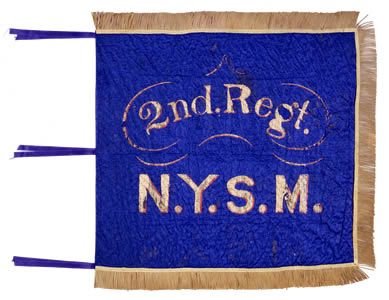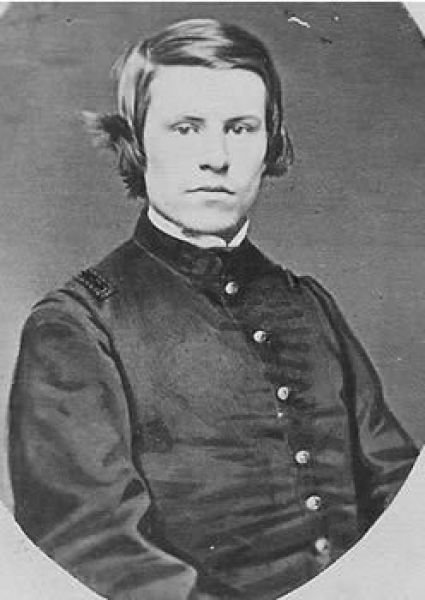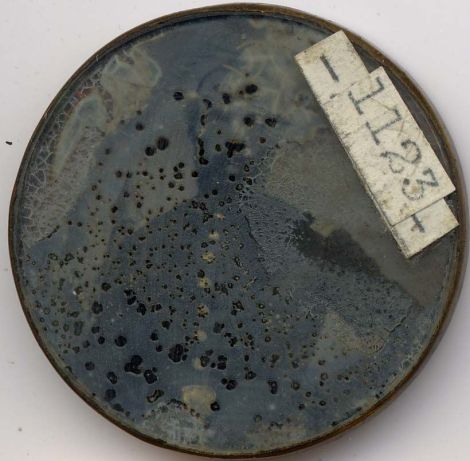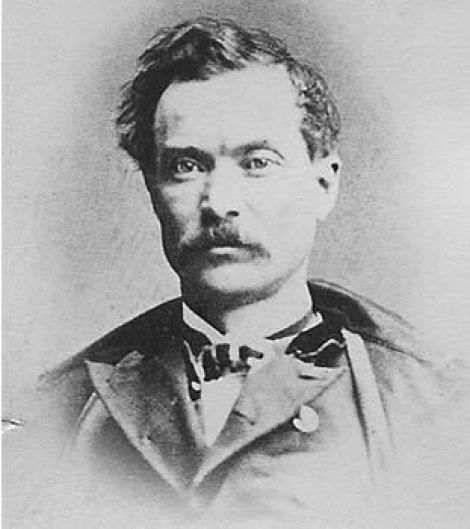82nd Infantry Regiment
Nickname: Second Militia; Second Regiment N. Y. S. Light Infantry; State Guards.
Mustered in: May 20 to June 7,1861.
Mustered out: June 25, 1864.
The following is taken from New York in the War of the Rebellion, 3rd ed. Frederick Phisterer. Albany: J. B. Lyon Company, 1912.
The 2d Regiment Militia failing to be ordered to the front under the first call, organized in New York City as a regiment of volunteers, Col. G. W. B-. Tompkins, under special authority from the War Department; and was mustered in the service of the United States for three years at Washington, D. C, between May 20 and June 17, 1861. Company A was mustered out and consolidated into the other companies' July 15, 1861; a new Company A joined in September, 1861; Company D, the howitzer company of the regiment, served mostly detached from it, until it was finally converted into the 3d Battery of Light Artillery, and, in September, 1861, was replaced by a new company. The regiment was recruited principally in New York City, turned over to the State in September, 1861, and received its numerical volunteer designation December 7, 1861. The men not entitled to be mustered out with the regiment were, May 22, 1864, formed into a battalion of five companies, those of A and C forming Company A; those of B and G forming Company B; those of F and I forming Company C; those of D and H forming Company D, and those of E and K forming Company E, and June 28, 1864, the men of the 42d Infantry, not mustered out with their regiment, were transferred to this battalion, which was finally, July 10, 1864, transferred to the 59th Infantry.
The regiment left the State May 18, 1861; served at and near Washington, D. C., from May 20, 1861; in 2d Brigade, 1st Division, Army Department N. E. Virginia, from July, 1861; in Stone's Brigade, Division Potomac, from August 1, 1861; in Gorman's Brigade, Stone's Division, Army of Potomac, from October 15, 1861; in same, 1st, brigade, 2d Division, 2d Corps, Army of Potomac, from March, 1862; and commanded by Col. Henry W. Hudson, it was honorably discharged and mustered out June 25, 1864, at New York City.
During its service the regiment lost by death, killed in action, 5 officers, 129 enlisted men; of wounds received in action, 5 officers, 38 enlisted men; of disease and other causes, 5 officers, 84 enlisted men; total, 15 officers, 251 enlisted men; aggregate, 266; of whom 24 enlisted men died in the hands of the enemy.
The following is taken from The Union army: a history of military affairs in the loyal states, 1861-65 -- records of the regiments in the Union army -- cyclopedia of battles -- memoirs of commanders and soldiers. Madison, WI: Federal Pub. Co., 1908. volume II.
Eighty-second Infantry.—Cols., George W. B. Tompkins, Henry W. Hudson, James Huston; Lieut.-Cols., Henry W. Hudson, James Huston, John Darrow; Majs., Joseph J. Dimock, Thomas W. Baird. The 82nd, the 2nd militia, recruited principally in New York city, left the state for Washington, May 18, 1861, and was there mustered into the U. S. service May 20 to June 17, for three years. Co. D was detached and became the 3d battery of light artillery and a new company took its place in Sept., 1861. The regiment was quartered near the capitol until July 3, when it was assigned to the 2nd brigade, 1st division, Army of Northeastern Virginia, crossed into Virginia and engaged at Bull Run, with a loss of 60 in killed, wounded and missing. In August the 82nd was attached to the brigade, which later became the 1st brigade, 2nd division, 2nd corps, and after, passing the winter in the defenses of Washington, moved to the Peninsula with the general advance under McClellan in March, 1862. It participated in the siege of Yorktown; the battle of Fair Oaks; the Seven Days' fighting; was next active in the Maryland campaign and suffered severe losses at Antietam in the advance of Sedgwick's division, upon the Dunker Church. Out of 339 men engaged, 128 were reported killed, wounded or missing. The regiment arrived at Falmouth late in November; participated in the battle of Fredericksburg; returned to its camp at Falmouth; was active at Chancellorsville in May, 1863; after a short rest at Falmouth marched to Gettysburg and there suffered fearful loss, 192 members out of 365 engaged, Col. Huston being numbered among the dead. It next participated in the engagements of the 2nd corps at Auburn and Bristoe Station in the autumn and in the Mine Run campaign, and went into winter quarters at Brandy Station. Camp was broken for the Wilderness campaign late in April, 1864, and the regiment was in action constantly until after the first assault on Petersburg, where it lost 1 man killed, 9 wounded and 111 missing. On June 25, 1864, the term of service expired and the original members not reenlisted were mustered out, the remainder of the regiment being consolidated into a battalion of five companies, to which the veterans of the 40th N. Y. were transferred on June 28. On July 10, the battalion was consolidated with the 59th N. Y. infantry. The total enrollment was 1,452, of whom 178 died of wounds and 89 from other causes. The regiment was conspicuous for its dash and daring and became famous for its fighting qualities.

82nd Regiment NY Volunteer Infantry | Flank Marker | Civil War
This blue silk flank marker features painted inscriptions on both sides and twisted and looped fringe along the top, fly and bottom edges. Confederate…
NYSMM Online Resources
Battles and Casualties from Phisterer (pdf)
Battles and Casualties from Phisterer (spreadsheet)





